The Perception of the World Through Windows
The Windows we have been looking at have, to this point, been like picture frames giving focus to a scene - inside or outside.
Windows are also used by artists to help emphasise the narrative structure of the image, as seen in Girl Reading a Letter at an Open Window by Vermeer, painted in about 1657. It’s beautiful isn’t it?

In this painting (above) the viewer is in the privileged position of being inside the house with the subject, intimately observing the girl reading her letter. Even though the curtain is there to separate viewer and subject you don’t really feel you are violating her privacy.
Some artists, however, use windows to challenge the viewer's perception of the world. American Edward Hopper often uses windows to provoke our curiosity and even to threaten our sense of decency. How do you feel when you view Night Windows? Perhaps you are shocked that you find yourself becoming curious and concerned that you might be accused of voyeurism!
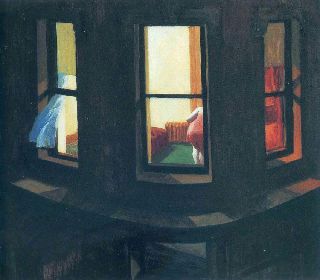
And like Edward Hopper, I also rather like painting windows as a lens into the world of others. This is my painting of Night Developments.
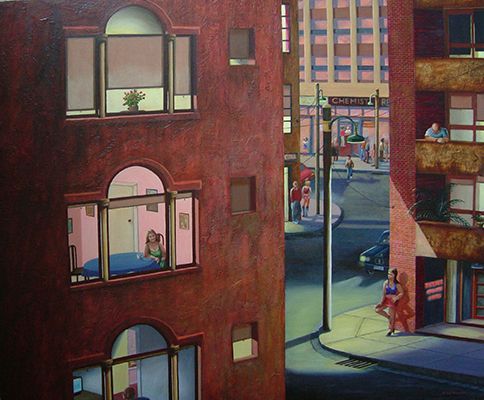
And in my Dockland Developments you can just discern through the windows and door openings the shapes of people who have chosen to eat inside.
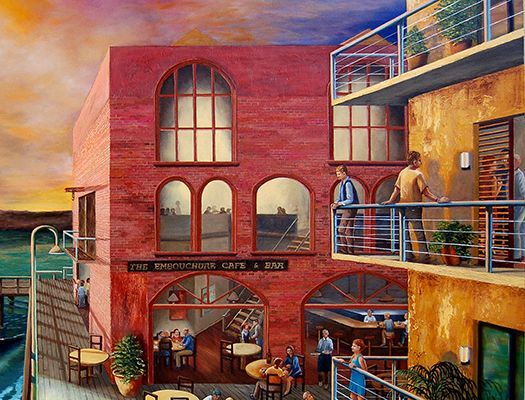
I played around with the same concept and subject matter in The Dekk (below) where, if you look closely at the section of the painting I have shown, you will see the diners who are trying to dine privately without our prying eyes.
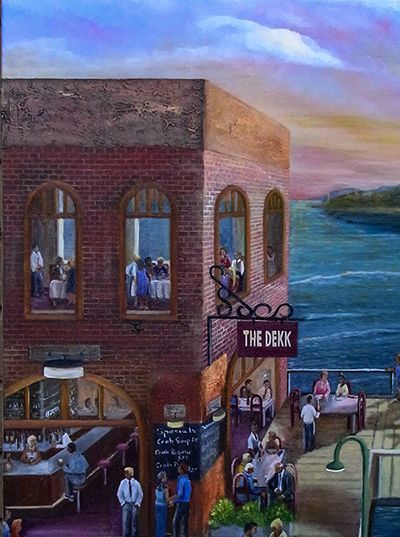
Similarly, in a section from The Studdio (below) you can see gyrating dancers through the wide window, while in the window of the building next door, a chef prepares the evening meals.
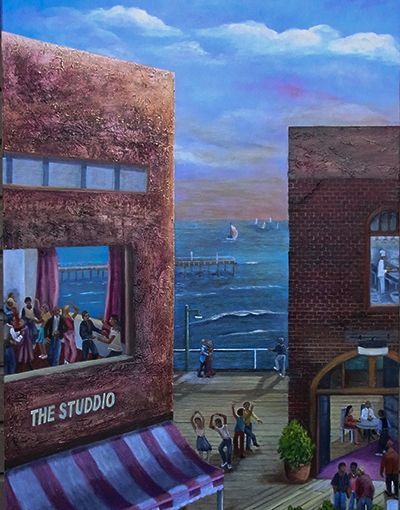
As a little aside, you will note I am sure the misspelling of the titles in the paintings above: The Dekk and The Studdio. Sadly, extending my sense of fun to the misspelling of the titles brought me unstuck. Many years ago when these paintings were entered in a local exhibition I was informed by a somewhat smug exhibition organiser that my spelling of the titles for my paintings had been corrected for the catalogue!! Fortunately, the person who purchased the paintings had a similar sense of humour to mine.
But let us return to the experts and look at a couple of the window paintings created by Belgian surrealist René Magritte (1898-1967), both under the title The Human Condition.
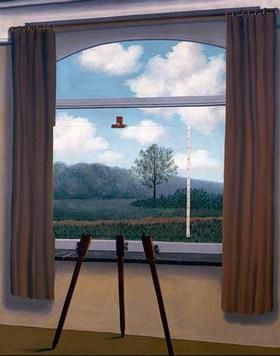
Magritte had this to say of his 1933 work (above):
In front of a window seen from inside a room, I placed a painting representing exactly that portion of the landscape covered by the painting. Thus, the tree in the picture hid the tree behind it, outside the room. For the spectator, it was both inside the room within the painting and outside in the real landscape.1
Another painting with the same title was created by Magritte in 1935.
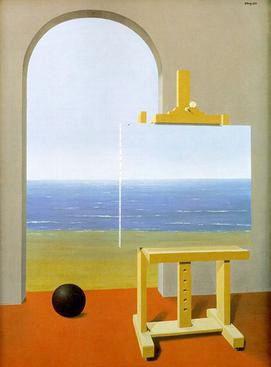
This is a link to a short but informative explanation of Magritte's perception of The Human Condition in Wikipedia.
If you would like to know even more about Magritte's paintings within a painting which typically use an easel with a canvas in front of an open window, please follow this link.
Picasso also played around with window paintings. I rather like this one titled Table in Front of Window.
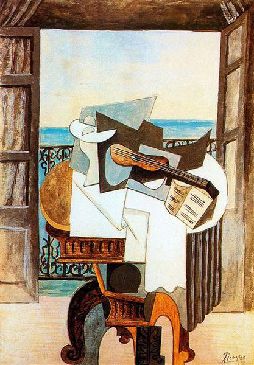
Juan Gris (1887-1927), another Spanish Cubist painter and disciple of Picasso, painted The Open Window.
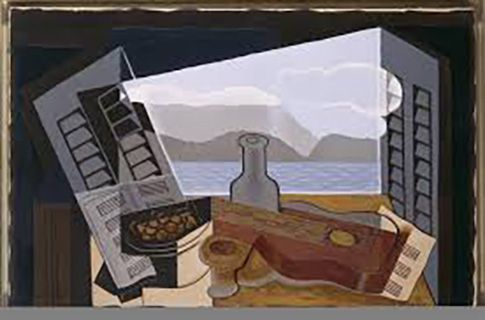
If you would like to have a go at creating your own window painting I suggest you start by copying a painting you like.
I am more than happy for you to copy any of my paintings. Perhaps you would like to have a go at this one which is titled: Windows on a Time: Two. In this painting I have used the ruins of an old building to look through the windows and open doorway to a time in the past.
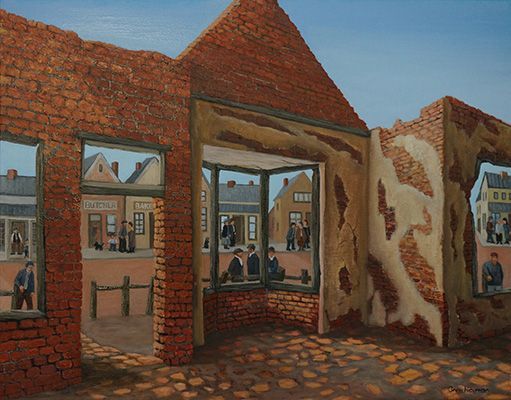
Tomorrow we will look at that enchanting period Art Nouveau and some Windows created at this time.
Credit
1. en.wikipedia.org
2. edwardhopper.net
3. wikiart.org
